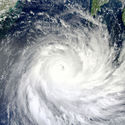Aotearoa New Zealand’s limestone caves are special places. To many Māori, they are tapu. To explorers and thrill seekers, they are a great place for an adventure. To scientists and scholars, cave systems are important as a cornerstone of climate, palaeontological and archaeological research.
Carved into the rock and shaped by flowing water, rain and the weather, cave systems are constantly influenced by the Earth’s changing climate and the ecosystems above them. Environmental signals carried in rainwater or physical taonga from the deep past are carried underground where they can be sheltered and preserved.
Caves can help preserve the past
Limestone caves are sheltered from surface weather by thick layers of rock. All kinds of things can make their way into cave systems from the surface. When they do, they can stay protected for hundreds of thousands of years. For this reason, caves are special to palaeontologists, archaeologists and Māori kairangahau because of how they preserve items like bones of extinct animals and cultural artefacts.
Some of the most complete moa skeletons we have today were found preserved from the elements in the dry, upper regions of New Zealand’s cave systems. Both burial sites and archaeological sites left by Māori using caves as shelter have been found. These taonga are useful for building a picture of the history of Aotearoa. Cultural artefacts can show us how the first arrivals in Aotearoa adapted to our unique climate. Taonga – like bones – give us insight into how our ecosystems have changed over the past, stretching back as far as 25,000 years.
Climate signals
Researchers aren’t only interested in caves because of their ability to preserve taonga. The development of high-resolution detectors and analysers has allowed chemists to trace tiny chemical changes in cave rock and link them back to changes in the conditions that formed the cave. This can tell us all kinds of things about past climate, weather and the environment. This information is best preserved in speleothems – cave formations like stalagmites and stalactites that form from the water dripping into caves through the overlying rock.
Speleothems form from water travelling through the karst above cave systems, which dissolves little bits of limestone and carries them down into caves through cracks. In the right conditions, the limestone dissolved in the water can precipitate out, forming thin white rock coatings on the ceiling or floor of a cave. Over thousands of years, these coatings can build up in layers forming speleothems. On cave ceilings, these formations are called stalactites. On cave floors, columns of limestone growing upwards are called stalagmites. Layers of limestone forming where streams flow along walls or along a cavern floor are called flowstones.
As speleothems are built up in layers over long periods of time, the composition of the rock at any given point in the formation will represent a discrete period of growth. If scientists can find the age of a layer in a speleothem, they can then link changes in the speleothem make-up between layers to environmental changes in the processes driving speleothem formation over time.
Nature of science
Scientists value cave systems as archives of information – preserving taonga and climate information from the past. In the past, research has been focused on physical taonga/artefacts, but scientists are developing techniques to extract weather information from the impacts of ancient streamflow on cave formations. This could help us learn how to manage our current changing climate.
Linking changes in cave systems to changes in the environment
As the groundwater that makes speleothems is originally from the surface, factors that affect surface water conditions also affect the ways that speleothems form. Things like weather events, climate changes and surface vegetation can all have tiny impacts on the kind of speleothems forming in a cave system. The chemical reactions that cause cave formations are also often affected by temperature and atmospheric conditions inside the cave, so weather events and changes in climate can also affect the way that speleothems form as well as the water they flow from.
By working backwards from a speleothem’s properties, scientists can determine what the surface was like while the speleothem was forming. Things like traces of plant matter, minerals from the surface soil and chemicals from the atmosphere can be found preserved in speleothem calcite layers. For example, in the speleothem in this image, the dark layers at the top of the speleothem contain plant matter, while the pure white base contains very little plant matter.
Scientists are constantly on the lookout for new tools that can help them understand how climate changes in the past have been linked to changes in the weather and in the stability of surface ecosystems. Caves can act as time capsules for all sorts of information about the history of our planet, extinct species, our own history and our changing climate. This information is important for helping build our understanding of our place in New Zealand, our heritage and our past as well as how our actions today can help shape and preserve our future.
Modelling stalactite and stalagmite formations
This activity uses Epsom salts to model the formation of stalactites and stalagmites. As a model, it provides an engaging visual representation for younger students. Challenge senior students to identify the differences between the chemical processes and conditions by which stalactites form in the classroom compared to the natural environment.
Related content
We’ve curated limestone resources in the article Limestone, a fizzy rock – introduction.
Clues to the past looks at other types of evidence that scientists use to learn about past climates.
Lakes380 uses lake sediment cores to learn about changes caused by volcanic eruptions, landslides, climate change or other natural events as well as human habitation.
Foulden Maar also tells a story about climate records.
Activity idea
Modelling stalactite and stalagmite formations – this simple activity can be used from the early years to seniors. It includes suggestions for differentiated learning opportunities.
Acknowledgement
This article was written by Robert Brodnax.






